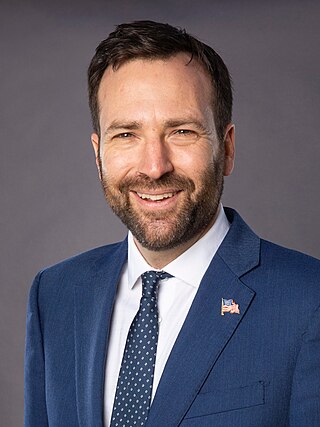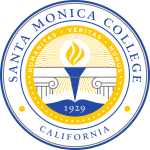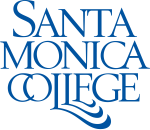
Santa Monica is a city in Los Angeles County, situated along Santa Monica Bay on California's South Coast. Santa Monica's 2020 U.S. Census population was 93,076. Santa Monica is a popular resort town, owing to its climate, beaches, and hospitality industry. It has a diverse economy, hosting headquarters of companies such as Hulu, Activision Blizzard, Universal Music Group, Lionsgate, Illumination and The Recording Academy.

Oak Park is an unincorporated community in southeastern Ventura County, California, United States. When developed in the Simi Hills in the late 1960s, a single road provided the only access to the community from Agoura Hills, California, in neighboring Los Angeles County. As of the 2010 census, Oak Park had a population of 14,266, down from 14,625 at the 2000 census. For statistical purposes, the United States Census Bureau has defined Oak Park as a census-designated place (CDP). The census definition of the area may not precisely correspond to local understanding of the area with the same name.

Orange Coast College (OCC) is a public community college in Costa Mesa in Orange County, California. It was founded in 1947, with its first classes opening in the fall of 1948. It provides Associate of Art and Associate of Science degrees, certificates of achievement, and lower-division classes transferable to other colleges and universities. The college enrolls approximately 24,000 undergraduate students. In terms of population size, Orange Coast College is the third-largest college in Orange County.

Pepperdine University is a private research university affiliated with the Churches of Christ with its main campus in Los Angeles County, California. Pepperdine's main campus consists of 830 acres overlooking the Pacific Ocean and the Pacific Coast Highway near Malibu, California. Founded by entrepreneur George Pepperdine in South Los Angeles in 1937, the school expanded to Malibu in 1972. Courses are now taught at a main Malibu campus, three graduate campuses in Southern California, a center in Washington, D.C., and international campuses in Buenos Aires, Argentina; London, United Kingdom; Heidelberg, Germany; Florence, Italy; and Blonay – Saint-Légier, Switzerland.
The Los Angeles Westside is an urban region in western Los Angeles County, California, United States. It has no official definition, but sources like LA Weekly and the Mapping L.A. survey of the Los Angeles Times place the region on the western side of the Los Angeles Basin south of the Santa Monica Mountains.
West Los Angeles is an area within the city of Los Angeles, California, United States. The residential and commercial neighborhood is divided by the Interstate 405 freeway, and each side is sometimes treated as a distinct neighborhood, mapped differently by different sources. Each lies within the larger Westside region of Los Angeles County.

Sawtelle is a neighborhood in West Los Angeles, on the Westside of Los Angeles, California. The short-lived City of Sawtelle grew around the Pacific Branch of the National Home for Disabled Volunteer Soldiers, later the Sawtelle Veterans Home, and was incorporated as a city in 1899. Developed by the Pacific Land Company, and named for its manager W. E. Sawtelle, the City of Sawtelle was independent for fewer than 30 years before it was annexed by the City of Los Angeles.
Compton College is a public community college in Compton, California. From 2006, when it lost its regional accreditation, to 2017, when it regained that accreditation, it operated as a part of El Camino College. Before and after the partnership with El Camino College, the college was operated by the Compton Community College District.

Santa Monica High School, officially abbreviated to Samohi, is a public high school in Santa Monica, California. Founded in 1891, it changed location several times in its early years before settling into its present campus at 601 Pico Boulevard. It is a part of the Santa Monica–Malibu Unified School District.

Los Angeles City College (LACC) is a public community college in East Hollywood, California. A part of the Los Angeles Community College District, it is located on Vermont Avenue south of Santa Monica Boulevard on the former campus of the University of California, Los Angeles (UCLA). From 1947 to 1955, the college shared its campus with California State University, Los Angeles, then known as Los Angeles State College of Applied Arts and Sciences (LASCAAS), before the university moved to its present campus of 175 acres (71 ha) in the northeastern section of the City of Los Angeles, 5 miles (8 km) east of the Civic Center.

The College of Marin is a public community college in Marin County, California, with two campuses, one in Kentfield, and the second in Novato. It is the only institution operated by the Marin Community College District.
Pico Boulevard is a major Los Angeles street that runs from the Pacific Ocean at Appian Way in Santa Monica to Central Avenue in Downtown Los Angeles, California, United States. It is named after Pío Pico, the last Mexican governor of Alta California.
The western border of Santa Monica, California, is the 3-mile (4.8 km) stretch of Santa Monica Bay. On its other sides, the city is bordered by various districts of Los Angeles: the northwestern border is Pacific Palisades, the eastern border is Brentwood north of Wilshire Boulevard and West Los Angeles south of Wilshire, the northeastern border is generally San Vicente Boulevard up to the Riviera Country Club, the southwestern border is Venice Beach and the southern border is with West Los Angeles and Mar Vista.

Malibu High School (MHS) is a public high school in Malibu, California. The school is one of three high schools in the Santa Monica–Malibu Unified School District and serves students in the city of Malibu and surrounding communities.
Whittier Union High School District is a California high school district in Los Angeles County, California, headquartered in Whittier. The union high school district was formed in 1900 and is currently composed of five comprehensive high schools, two alternative high schools, and an adult education center. Combined, these schools serve over 13,000 students. The school district is overseen by its current Superintendent, Dr. Monica Oviedo. The Board of Trustees is composed of five members, elected by trustee areas. The elections are currently held on a Tuesday after the first Monday in November of even-numbered years.

The Los Angeles Center for Enriched Studies is a public university preparatory secondary school located on 18th Street between La Cienega Boulevard and Fairfax Avenue in the Faircrest Heights district of Los Angeles, California, on the former site of Louis Pasteur Middle School.

The Santa Monica Public Library (SMPL) is the public library serving residents of Santa Monica, California and surrounding areas. SMPL is directed by a City Librarian, who reports to the Santa Monica City Manager's Office and is overseen by a Library Board consisting of five members appointed by the Santa Monica City Council.

On June 7, 2013, a spree shooting occurred in Santa Monica, California. Its catalyst was a domestic dispute and subsequent fire at a home, followed by a series of shootings near and on the Santa Monica College campus. Six people were killed, including the suspect, and four injured. The shooter — 23-year-old John Zawahri — was killed by police officers when he exchanged gunfire with them at the Santa Monica College library.

Benjamin J. "Ben" Allen is an American attorney and Democratic politician. He has been a California state senator representing the 26th district from 2015 to 2022 and the 24th district since 2022. He previously served as University of California Student Regent and Santa Monica-Malibu Unified School District school board member.

John Edward Deasy is an American businessman who served as the superintendent of Stockton Unified School District from June 1, 2018, to June 15, 2020. Prior to that, Deasy served as the superintendent for Los Angeles Unified School District from 2011 to 2014, Prince George's County Public Schools from 2006 to 2008, Santa Monica–Malibu Unified School District from 2001 to 2006, and Coventry Public Schools from 1996 to 2001.





































